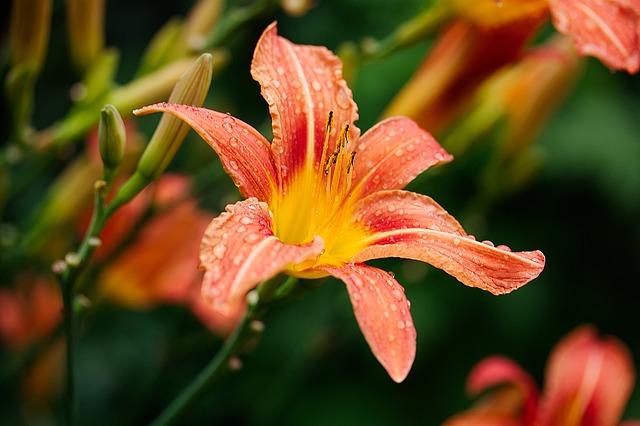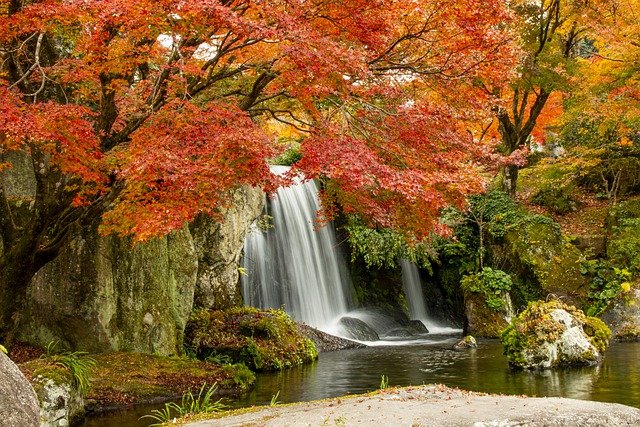This reflection was stimulated by Haruki Murakami’s book, Novelist As A Vocation, in which he shares his origins as a writer, his approach to writing and some of the challenges he has had to deal with along the way. The ideas he shares resonate strongly with my own experience of writing this blog, even though this is not a novel but a very different writing genre. The fact that the blog involves creativity and the art of writing provides the common ground to explore Murakami’s experience and ideas.
The creative stimulus
Murakami begins a novel with a basic story that evolves as he introduces his characters – he explains, “In most cases, the characters who appear in my novels naturally emerge from the flow of my story”. The stimulus for his story is something he has observed happening, specific behaviours of an individual or an incident in his own life. Like Charles Dickens, he is a keen observer of behaviour – he maintains that the stimulus for a story comes from glancing at a person’s appearance, “how they talk and act, their special characteristics”. He notes, too, that it is not enough just to notice people that you like – you also need to notice those you dislike and try to understand why you feel this way about them.
Like Murakami, my stimulus for a blog post is typically an interaction that I have had, a behaviour I have observed in my organisational consulting/manager development work, a current experience that I am having or something I have read or heard. I often draw inspiration for a blog post from listening to a podcast, reading an article, or participating in a Summit or Conference. I typically focus on current issues such as Long Covid, trauma, mental health and working from home – all the time exploring the linkages with mindfulness and mindfulness practices.
The role of characters/ stimulators
Interestingly, Murakami maintains that he does not start out with a highly developed character or group of characters. He contends that characters emerge as he begins to write and becomes captured by the creative process that he enjoys immensely. He goes so far as to say that “characters take on a life of their own”, even leading the novelist to an “unexpected destination”.
I can relate to these comments about characters by substituting the concept of the “stimulator” – the author, podcaster, interviewee or presenter who stimulates my creative endeavour to write a blog post about their ideas, actions or perspectives. As the blog post emerges through my writing, the line of discussion or argument can take an unexpected turn as I often start out without a firm idea of where a blog post will end up. For example, in my latest blog post I wrote about nurture by nature and stewardship of nature in our immediate environment and ended up where I least expected.
When I started out writing, these two aspects (nurture and stewardship) were discrete elements in my mind and that of the “stimulator”. However, as I progressed with writing the post, I decided to add the ideas of Costa Georgiadis from his book, Costa’s World, as a way of reinforcing the message of the reciprocal relationship with nature – nurture and stewardship. However, through Costa’s influence, I ended up changing my perspective and began to understand that by stewarding nature we are simultaneously opening ourselves up to nurturing by nature (e.g. restoration of peace and calm, stimulation of wonder and awe). I came to understand that nurture and stewardship are not necessarily discrete activities (although they may be in certain circumstances). Costa’s World is the bible for my current composting and gardening activities.
Drawing on stored memories
Murakami states that the characters he employs in his novel are not real people (and definitely not himself) but represent an amalgam of characters drawn from stored memories of people, experiences and places. He weaves elements of different people into any one character to give them life and meaning in the context of what he is writing about. He may draw directly on his own experience relevant to the topic but it is often well disguised.
When I write a blog post, I draw on my stored memory of what I have written previously (not just my current blog) and books/novels/memoirs I have read that reinforce some aspect of what I am writing about (or, alternatively that put forward a contrary view). The blog post then tends to take on a life of its own and can arrive at a different place to what I intended at the outset. Sometimes I will even incorporate poetry or songs (especially mantra meditations) if they add to, or reinforce, the overall message – there are many occasions, synchronistically, where a song I am listening to reinforces where I am up to in writing a blog post (I typically listen to mantra meditations as I write). Examples of this are Alexa Chellun’s Healing Song and Metamorphosis by Lulu & Mischka.
Criticism and compliments
Murakami discusses one lesson that he has learnt as a professional writer – no matter what he writes or how long it is, someone will criticise his work. He concluded that it was best to ignore these adverse comments and just “write what I want to write, in the way I want to write it”. I can concur in this view because there is no way that you can please everyone. This approach creates a unique sense of freedom (unlike the constrictions of academic writing!).
Murakami also noted that “people of different age groups” seem to be reading his novels – e.g. parents encourage children to read his books (or vice versa). Compliments from people acknowledge the difference that his writing has made in their lives and hearing these comments “really cheers him up”. I too really appreciate the compliment when people comment positively on my blog posts and/or seek a link to what they are working on that is relevant to the topic of my post.
Gestation and the creative process
Murakami adopts the discipline of daily writing because this enables creativity to flow. He also employs a daily fitness routine which includes running (and sometimes marathons) – he maintains that you have to be fit to write for extended periods and physical activity stimulates the brain.
Gestation for my blog posts begins with reading (e.g. Tina Turner’s book), listening to a podcast (e.g. Life Through Transitions by Jon DeWaal) or watching a video (e.g. the video interview with Susan Bolt). I usually take notes and record any connections with something else I have written or remember – this enables me to expand my thinking beyond the original stimulus (and the stimulator’s perspective). Typically, I will let my subconscious mind work on the topic overnight and begin afresh the next morning (being a “morning person”, I write best in the early mornings). I find that this gestation process usually leads to the emergence of a structure for my blog post and unearthing of connections that I had not previously thought of – these connections become “top-of-mind” rather than staying submerged. I also try to keep fit through walking, Tai Chi and physical exercises designed to redress my spinal degeneration.
Reflection
Murakami maintains that each person has to find their own style of writing, whether they are writing a novel, an essay or a short story. The same is true of writing a blog – the writer’s life experience and perspectives, as well as the focus of the blog, influence the nature and structure of the writing process.
As I reflect on my life and my reading/listening/viewing, I am able to grow in mindfulness. Like Murakami, I can attain a deeper level of self-awareness and new perspectives while enhancing my capacity to think and write. Examples of my growing sense of self-awareness include my discussion of resentment and blind spots.
________________________________
Image by Cindy Lever from Pixabay
By Ron Passfield – Copyright (Creative Commons license, Attribution–Non Commercial–No Derivatives)
Disclosure: If you purchase a product through this site, I may earn a commission which will help to pay for the site, the associated Meetup group, and the resources to support the blog.



